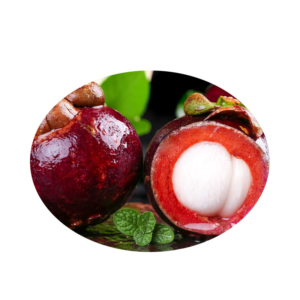Mangostine
-Plant extracts
Product information

| Product Name | Mangostine |
| CAS | 6147-11-1 |
| Melting point | 180-182°C |
| Boiling point | 640.1±55.0 °C(Predicted) |
| Density | 1.265± 0.06g /cm3(Predicted) |
| Storage conditions | 2-8°C |
| Solubility | Soluble in methanol: 1mg/mL, transparent, light yellow |
| Morphological | Powder |
| Acidity coefficient (pKa) | 7.22±0.20(Predicted) |
| Color | Light yellow to yellow |
| Purity | 98% |
| Shelf life | 2 years |
Summarize
It is a kind of xanthone compound extracte from the plant bambusa sinensis. In addition, it is derive from the effective component of natural bamboos. And has the characteristics of safety, non-toxicity and a long history of consumption. Which provides the theoretical and application basis for the in-depth study of α-gogostin as a medicine.
Biological activity of Mangostine
Alpha-Mangostin (alpha-Mangostin) is a dixanthone with a wide range of biological activities. Such as, antioxidant, anti-allergic, anti-viral, antibacterial, anti-inflammatory and anti-cancer effects. So,It is an inhibitor of IDH1 mutant (IDH1-R132H) with a Ki value of 2.85 μM.
Chemical property
White crystalline powder, soluble in methanol, ethanol, DMSO and other organic solvents. Derived from Guttiferae mangosteen shell, monahan fruit, mountain.
Use
Now,Baisfu Mangostine has the effect of treating diarrhea, malaria, anti-inflammatory, anti-ulcer, and anti-leukemia and septicemia.
For content determination/identification/pharmacological experiments, etc
Pharmacological effect: It has antioxidant, anti-inflammatory, antibacterial, anticancer and other pharmacological activities
In Vitro Study
Firstly,Mangostine (α-Mangostin) exhibits a selective inhibitory effect on IDH1-R132H. But not on IDH1. alpha-Mangostin (α-Mangostin) competitively inhibits the binding of alpha-mangostin (α-KG) to IDH1-R132H. Secondly,The structure–relationship study reveals that alpha-Mangostin (α-Mangostin) exhibits the strongest core inhibitor structure. And,alpha-Mangostin (α-Mangostin) selectively promotes demethylation of 5-methylcytosine (5mC) and histone H3 trimethylated lysine residues in IDH1 (+/R132H) MCF10A cells.
Then,Cell proliferation significantly decreases in a dose-dependent manner in the cells treated with alpha-mangostin. Next,Alpha-mangostin also increases the levels of Bax (pro-apoptotic),cleaved caspase-9 and cleaved-poly(ADP-ribose) polymerase (PARP). Alpha-Mangostin (α-Mangostin) significantly inhibits light-induced degeneration of photoreceptors and 200 μM H 2 O 2 -induced apoptosis of RPE cells. Finally,200 μM H 2 O 2 -induced generation of reactive oxygen species (ROS) and light-induced generation of malondialdehyde (MDA) are suppressed by alpha-Mangostin (α-Mangostin).


